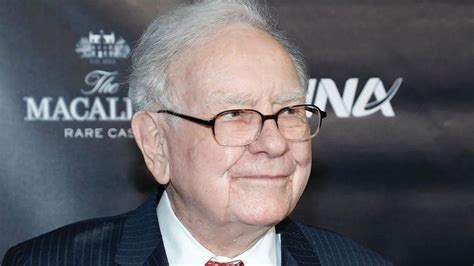
Elon Musk’s four-month tenure at the helm of X, formerly Twitter, has been marred by a stark realization: the platform’s transformation hasn’t resonated with users or advertisers, according to Gerber Kawasaki CEO Ross Gerber. Gerber, a Tesla investor and long-time Musk observer, asserts that Musk’s vision for X is failing to gain traction, highlighting a significant challenge for the tech mogul.
Ross Gerber, CEO of Gerber Kawasaki Wealth and Investment Management, believes Elon Musk is facing the harsh reality that his vision for X, formerly Twitter, isn’t working. He argues that Musk’s changes have alienated both users and advertisers, creating a significant problem for the platform’s future. Gerber, a known Tesla investor and a frequent commentator on Musk’s activities, made his assessment during a recent interview, emphasizing that Musk’s initial plans have not translated into success.
“I think what Elon’s realizing is nobody wants X,” Gerber stated bluntly, encapsulating the core of his argument. He suggests that Musk’s radical changes, aimed at creating an “everything app,” have backfired, leaving the platform struggling to retain its user base and attract advertising revenue.
Since acquiring Twitter in October 2022 for $44 billion, Musk has implemented a series of controversial changes. These include relaxing content moderation policies, which led to a surge in hate speech and misinformation; rebranding the platform as X; and introducing a subscription service called X Premium (formerly Twitter Blue) that offers verification badges and other features. Many of these changes have been met with widespread criticism and have driven away advertisers concerned about brand safety.
The financial implications for X are substantial. Advertising revenue, a major source of income for the platform, has plummeted. Musk himself acknowledged a “massive drop” in revenue earlier this year, attributing it to advertisers fleeing the platform. This financial strain has forced X to implement cost-cutting measures, including laying off thousands of employees.
Gerber’s assessment is not merely speculative. He highlights the tangible impact of Musk’s decisions on the platform’s financial performance and user engagement. The rebranding, in particular, has been widely mocked and criticized for its lack of clarity and its departure from the familiar Twitter brand.
The challenge for Musk now lies in finding a way to revitalize X and regain the trust of users and advertisers. This may require a significant course correction, including reevaluating his vision for the platform and addressing concerns about content moderation and brand safety. The future of X remains uncertain, but one thing is clear: Musk faces an uphill battle to turn his ambitious plans into reality. The task of proving Gerber wrong appears daunting, especially given the metrics and widespread sentiment.
The Acquisition and Initial Changes
Elon Musk’s acquisition of Twitter was one of the most high-profile and controversial deals in recent tech history. Driven by a vision of transforming the platform into an “everything app” akin to WeChat, Musk embarked on a series of radical changes almost immediately after taking control.
One of the first and most contentious decisions was to overhaul Twitter’s content moderation policies. Musk, a self-proclaimed “free speech absolutist,” argued that the platform had been too restrictive in its censorship policies. He relaxed the rules, allowing previously banned accounts, including those associated with hate speech and misinformation, to return to the platform. This decision sparked widespread outrage and led to concerns about the spread of harmful content.
Another significant change was the introduction of X Premium, a subscription service that offers verification badges and other features. While Musk argued that this would help combat bots and improve the quality of discourse on the platform, it was met with skepticism and criticism. Many users balked at the idea of paying for a service that was previously free, and the new verification system was quickly exploited by trolls and imposters.
The most visible change, of course, was the rebranding of Twitter as X. This move was met with widespread confusion and ridicule. The Twitter brand was iconic and recognizable, and the decision to abandon it in favor of a generic letter was seen as a major misstep.
The Impact on Advertisers and Revenue
The changes implemented by Musk have had a devastating impact on X’s advertising revenue. Advertisers, concerned about the spread of hate speech and misinformation on the platform, began to flee in droves. Major brands such as General Motors, Ford, and Pfizer suspended their advertising campaigns on X, citing concerns about brand safety.
The loss of advertising revenue has put X in a precarious financial situation. Musk himself acknowledged a “massive drop” in revenue earlier this year, and the company has been forced to implement drastic cost-cutting measures, including laying off thousands of employees.
The financial challenges facing X raise serious questions about the platform’s long-term viability. Unless Musk can find a way to regain the trust of advertisers and generate new revenue streams, the platform may struggle to survive.
The User Experience and Engagement
In addition to the financial challenges, X is also facing problems with user experience and engagement. Many users have complained about the increase in hate speech and misinformation on the platform, as well as the changes to the verification system.
The rebranding of Twitter as X has also been a source of frustration for many users. The new name is seen as generic and unmemorable, and the lack of clarity about the platform’s future direction has left many users feeling uncertain about its long-term value.
The combination of these factors has led to a decline in user engagement on X. Many users have stopped using the platform altogether, while others have reduced their activity. This decline in engagement further exacerbates the platform’s financial problems, as it reduces the value of X to advertisers.
Gerber’s Perspective and Analysis
Ross Gerber’s assessment of the situation is particularly insightful given his background as a Tesla investor and a long-time observer of Musk’s activities. Gerber’s firm holds shares in Tesla, giving him a vested interest in Musk’s success. However, Gerber has also been critical of Musk’s decisions in the past, demonstrating his willingness to speak his mind even when it may be unpopular.
Gerber’s statement that “nobody wants X” is a stark assessment of the platform’s current state. He argues that Musk’s changes have alienated both users and advertisers, creating a significant problem for the platform’s future.
Gerber’s analysis highlights the importance of understanding the needs and preferences of users and advertisers. Musk’s vision for X may be ambitious, but it has failed to resonate with the platform’s core audience.
The Future of X: Challenges and Opportunities
The future of X remains uncertain, but one thing is clear: Musk faces significant challenges in turning his vision into reality. He must find a way to regain the trust of users and advertisers, address concerns about content moderation and brand safety, and generate new revenue streams.
One potential opportunity for X is to focus on developing new features and services that appeal to its core audience. This could include improving the platform’s search functionality, introducing new tools for content creators, or expanding its offerings in areas such as live streaming and e-commerce.
Another opportunity is to partner with other companies to offer integrated services on the platform. This could include integrating X with e-commerce platforms, payment processors, or other social media networks.
However, these opportunities will only be realized if Musk can address the underlying problems that are currently plaguing X. He must prioritize content moderation, improve the user experience, and regain the trust of advertisers.
The road ahead for X is undoubtedly challenging, but it is not impossible for Musk to turn the platform around. By listening to the concerns of users and advertisers, and by focusing on innovation and improvement, Musk may be able to salvage his investment and create a thriving platform for the future. The question is whether he is willing to adapt his vision to the realities of the market.
Potential Course Correction and Strategies
Given the current predicament of X, several potential course corrections and strategies could be considered to steer the platform toward a more sustainable and successful future.
-
Reassessing Content Moderation Policies: Musk’s initial relaxation of content moderation policies, while intended to promote free speech, has led to a surge in hate speech and misinformation, deterring advertisers and alienating users. A more balanced approach is needed, one that upholds free speech principles while also protecting users from harmful content. This could involve implementing stricter enforcement of existing policies, investing in better content moderation tools, and working with third-party organizations to identify and remove harmful content.
-
Rebuilding Trust with Advertisers: The exodus of advertisers from X has been a major blow to the platform’s financial health. To win back advertisers, X needs to demonstrate a commitment to brand safety and a willingness to address their concerns. This could involve implementing stricter content moderation policies, providing advertisers with more control over where their ads appear, and offering guarantees against brand-damaging content.
-
Refining the X Premium Subscription Model: The X Premium subscription service has not been as successful as Musk had hoped. Many users are unwilling to pay for features that were previously free, and the new verification system has been plagued by problems. To make X Premium more appealing, Musk could consider offering more exclusive features, such as access to advanced analytics, priority customer support, or exclusive content. He could also explore different pricing models, such as offering a free trial or a tiered subscription system.
-
Re-evaluating the Rebranding: The decision to rebrand Twitter as X has been widely criticized and has alienated many users. While Musk may be committed to his vision of X as an “everything app,” he should consider the possibility that the new brand is hindering the platform’s growth. A re-evaluation of the rebranding strategy may be necessary, potentially involving a partial or complete return to the Twitter brand.
-
Focusing on Innovation and New Features: While addressing the platform’s existing problems is crucial, X also needs to focus on innovation and developing new features that appeal to users. This could involve improving the platform’s search functionality, introducing new tools for content creators, or expanding its offerings in areas such as live streaming, e-commerce, and payments.
-
Improving User Experience: The user experience on X has deteriorated in recent months, with many users complaining about the increase in spam, the changes to the interface, and the overall decline in quality. X needs to prioritize improving the user experience by addressing these concerns and making the platform more enjoyable and engaging to use.
-
Active Community Engagement and Feedback: X should actively solicit feedback from its user community to better understand their needs and preferences. This could involve conducting surveys, hosting focus groups, and engaging with users on social media. By listening to its users, X can make more informed decisions about the platform’s future direction.
-
Strategic Partnerships: X could benefit from forming strategic partnerships with other companies to expand its reach and offer new services. This could involve partnering with e-commerce platforms, payment processors, or other social media networks to offer integrated services on the platform.
-
Diversifying Revenue Streams: Relying solely on advertising revenue has proven to be unsustainable for X. The platform needs to diversify its revenue streams by exploring other options, such as subscriptions, e-commerce, and data licensing.
-
Transparency and Communication: Throughout this process, transparency and open communication with users and advertisers are crucial. Musk and the X leadership team should be transparent about the challenges the platform is facing and the steps they are taking to address them. They should also be responsive to feedback from users and advertisers and be willing to make changes based on that feedback.
Implementing these strategies will require a significant commitment from Musk and the X leadership team. It will also require a willingness to adapt and evolve the platform’s vision based on the realities of the market. The future of X depends on it.
Conclusion
Ross Gerber’s blunt assessment – “nobody wants X” – serves as a wake-up call for Elon Musk. It underscores the challenges he faces in transforming Twitter into his envisioned “everything app.” The mass exodus of advertisers, coupled with user dissatisfaction and the financial strain it has caused, paints a concerning picture. While Musk’s initial intentions might have been rooted in innovation and free speech principles, the execution has faltered, alienating key stakeholders. The road to recovery for X is fraught with obstacles, requiring a strategic recalibration, a renewed focus on user experience, and a rebuilding of trust with advertisers. Whether Musk can navigate these challenges and revitalize the platform remains to be seen. The coming months will be crucial in determining whether X can overcome its current struggles and carve out a sustainable future. Gerber’s words echo the sentiments of many who observe the unfolding saga: the reality of X’s current state is a far cry from Musk’s ambitious vision. The need for a significant pivot is undeniable if X is to avoid becoming a cautionary tale in the annals of tech acquisitions.
Frequently Asked Questions (FAQ)
1. Why does Ross Gerber believe that “nobody wants X”?
Ross Gerber believes that Elon Musk’s vision for X, formerly Twitter, is failing because the changes implemented by Musk have alienated both users and advertisers. He points to the relaxation of content moderation policies, the rebranding of the platform, and the introduction of X Premium as factors that have contributed to this decline. These changes have led to a surge in hate speech and misinformation, a loss of advertising revenue, and a decrease in user engagement.
2. What impact has Elon Musk’s acquisition had on Twitter’s advertising revenue?
Elon Musk’s acquisition of Twitter has had a devastating impact on the platform’s advertising revenue. Advertisers, concerned about the spread of hate speech and misinformation on the platform, have fled in droves. Major brands have suspended their advertising campaigns on X, citing concerns about brand safety. This has led to a “massive drop” in revenue, as acknowledged by Musk himself.
3. What are some of the controversial changes Elon Musk has made to Twitter since acquiring it?
Some of the most controversial changes Elon Musk has made to Twitter since acquiring it include:
- Relaxing content moderation policies, allowing previously banned accounts to return.
- Rebranding the platform as X.
- Introducing X Premium, a subscription service that offers verification badges and other features.
- Laying off a significant portion of Twitter’s workforce.
- Altering the platform’s verification system, leading to confusion and impersonation.
4. What are some potential strategies Elon Musk could use to revitalize X and regain the trust of users and advertisers?
Some potential strategies Elon Musk could use to revitalize X and regain the trust of users and advertisers include:
- Reassessing content moderation policies and implementing stricter enforcement.
- Rebuilding trust with advertisers by demonstrating a commitment to brand safety.
- Refining the X Premium subscription model to make it more appealing.
- Re-evaluating the rebranding of Twitter as X.
- Focusing on innovation and developing new features that appeal to users.
- Improving the user experience and addressing user concerns.
5. What are the long-term implications for X if Elon Musk is unable to turn the platform around?
If Elon Musk is unable to turn the platform around, the long-term implications for X are significant. The platform could face continued financial difficulties, leading to further cost-cutting measures and potentially even bankruptcy. The decline in user engagement could continue, further reducing the platform’s value to advertisers. Ultimately, X could become a shadow of its former self, losing its relevance and influence in the social media landscape. The success of a platform like X is dependent on network effects (the more users on a platform, the more valuable the platform becomes). As users abandon the platform, the network effect weakens, creating a negative feedback loop, which can lead to the platform’s ultimate demise.









